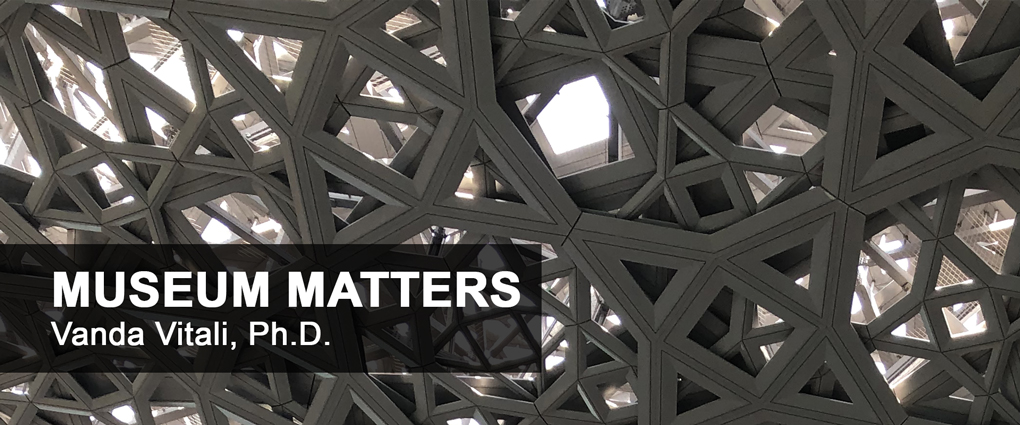
Intelligent Museums
Intelligent Society
Vanda Vitali, Ph.D. — Executive Director, Canadian Museums Association
Today, when we mention intelligence of anything, we tend to think of AI. I am not going to address here artificial intelligence and museums or how these latest technological advances can be used to help make museums more performing. Rather, I am going to address an aspect of the real intelligence of museums, the kind of intelligence they inspire in their visitor.
I would like to discuss two museums recently opened far away from us in the United Arab Emirates. For me, they both demonstrate the extraordinary power of museums to fulfill a social role, particularly if they have been well conceived, with an intelligent plan and social vision.
The first museum is the Etihad Museum in Dubai. Its main building, quite recent, is stunning. It was designed and created by ‘Moriyama and Teshima’, Canadian architects. Its overall presence, every detail of its exhibit displays, its video installations, its texts, its selection of objects, are at the centre of a museum complex that was conceived originally as a celebration of the creation of the United Arab Emirates. The presentation in that museum explains the specificities of each of the 7 Emirates and their diverse cultures. Then, it intelligently and successfully builds the story of their unification into the United Arab Emirates, and the importance of that unity, while still preserving individual characteristics.
The museum is a real treasure for all who are interested in knowing the history, present circumstance, and future of this part of the world but could also be a powerful tool for every Emirati person, of any age, in building pride, social and political awareness, and cohesion.
Louvre Abu Dhabi, the second museum in the area that I feel every reader should know about, is very different. Its grandeur of execution is impressive. The stunning architecture was designed by the prestigious Pritzker Architecture Prize winner Jean Nouvel. It took my breath away to see how imaginatively and grandiosely it uses its geographic position and various elements of local architecture to impress upon the visitor the importance of the place they are looking at, and are going into. But, then, equally intelligently, it presents the story of human civilizations through the ages, and from different parts of the world. It does this by grouping and presenting together artifacts in such a way that they show the communality of cultures. And whenever possible, the presentation includes in those groupings an object of the Emirati culture, thus suggesting the presence, uniqueness and significance of the UAE culture. Through its objects, which can be admired and enjoyed individually, the museum shows the diversity of human approaches to common needs, but builds a larger story of humanity through the unifying themes, all while simultaneously indicating Emirati culture as equally worthy of others that are internationally celebrated.
It is in this representation of the duality of unity and diversity — that is to say, diversity within unity, or unity within diversity — that museums, everywhere, can participate as a unifying social tool. And in turn, it is society that can benefit from using cultural tools at its disposal to convey important messages.
I intentionally featured two museums here, far from Canada, with stories or presentations that include items, rich in their own right, as all human stories are, to show a broader humanistic perspective thus allowing museums anywhere, to play a significant and relevant social role.>
But, if you wish to see how museums large and small in our country can intelligently deal with stories of diversity and unity, of course you will find many examples. On a recent trip to British Columbia I saw these themes at play in the Nanaimo Museum and the Nanaimo Art Gallery. They were both, in addition to the examples above, and in addition I’m sure to many other Canadian museums, excellent examples of the role museums can play in building social cohesion and unity.